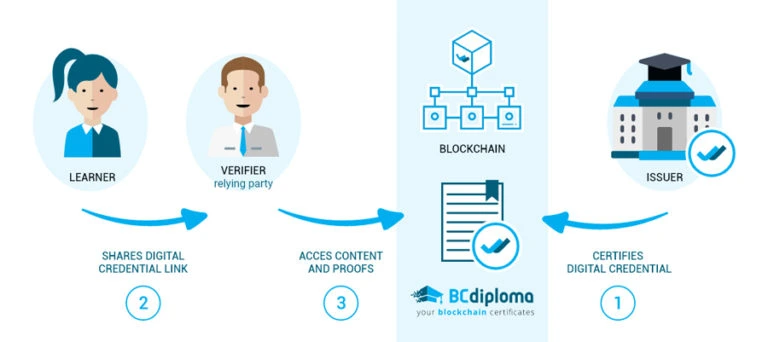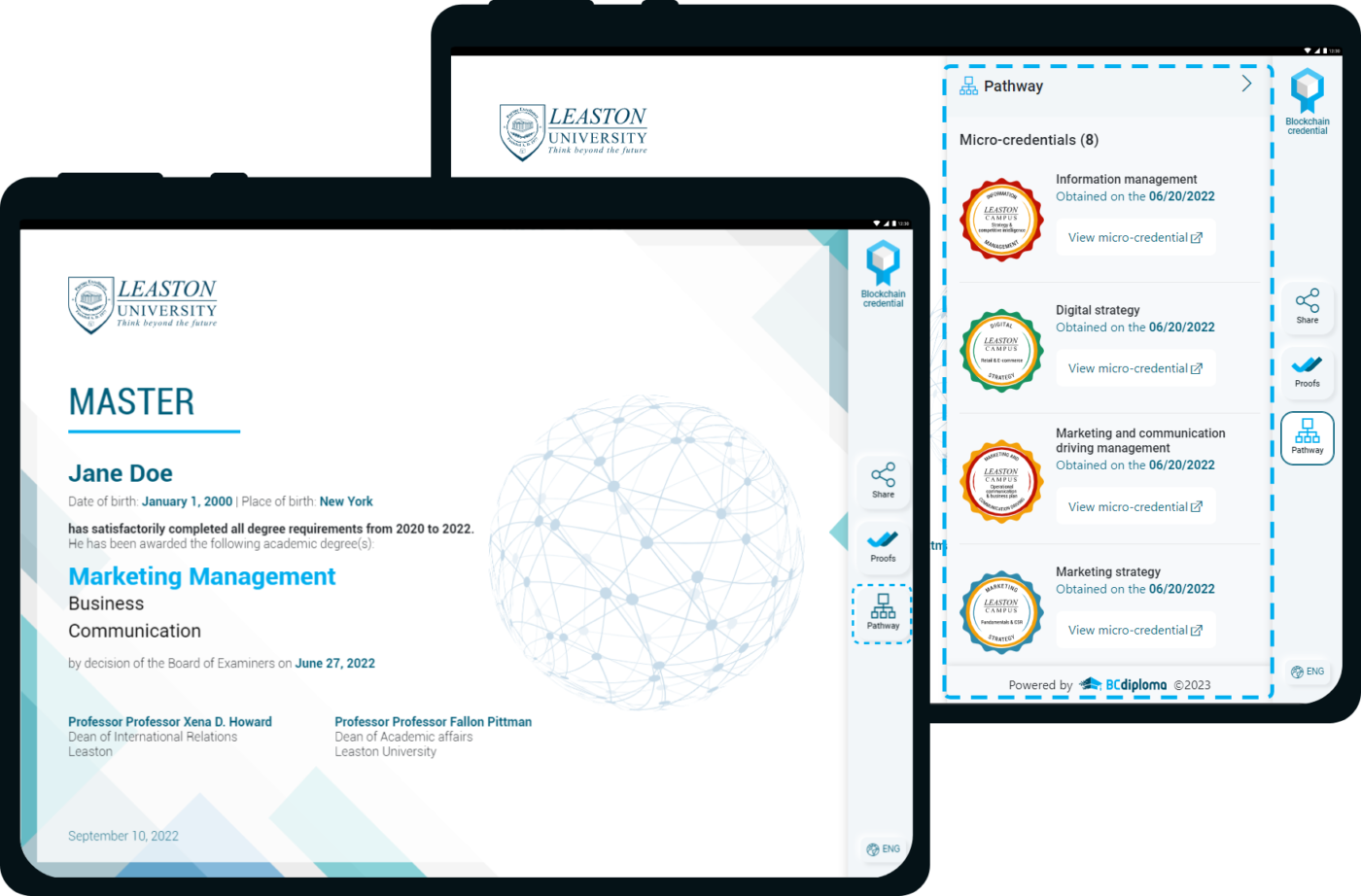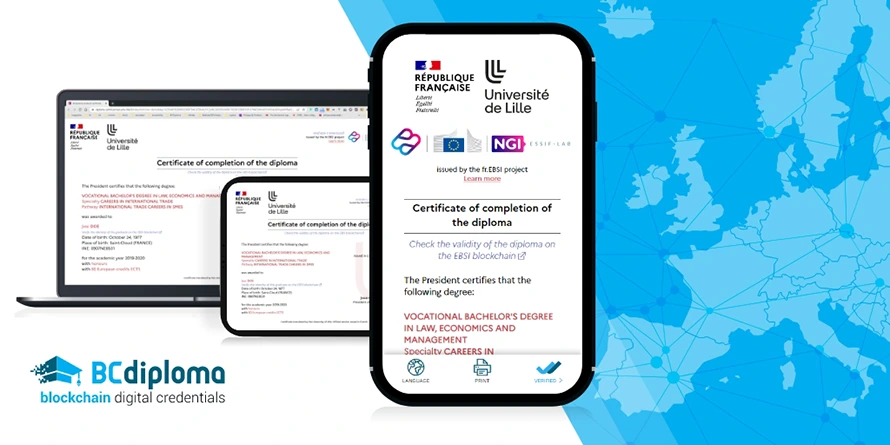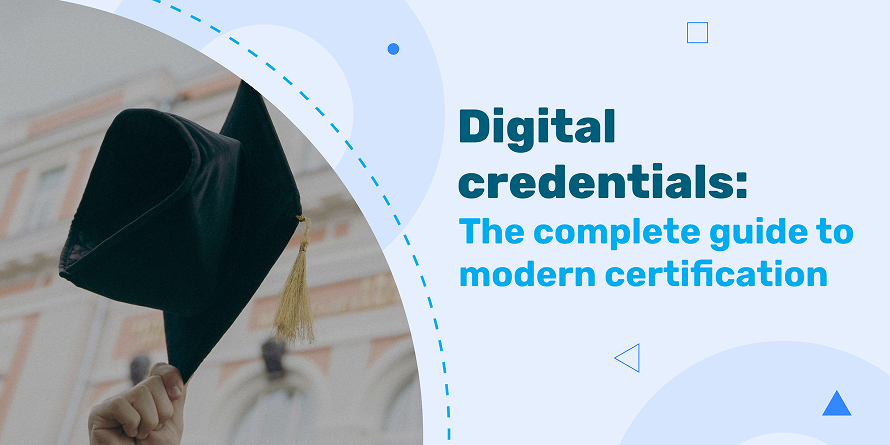In today’s digital society, the methods for recognizing education and training accomplishments are changing. Traditional paper documents are being replaced by more secure, versatile and verifiable online records. For certifying education and training organizations, adopting this technology has become a modern necessity. This guide provides a complete overview of the digital credential landscape, explaining how they work, their benefits, and their role in modern certification programs.
Introduction to digital credentials
The world of certifying qualifications is undergoing a rapid evolution. The shift from paper to digital is a fundamental change in how we manage and represent proof of abilities. The need for more dynamic, protected and shareable forms of recognition is driving this transformation, in response to the demands of a modern, skilled workforce.
Definition and evolution from traditional credentials
A digital credential is a verifiable and data-rich representation of a learning outcome. Unlike a static PDF, a true digital credential contains detailed metadata about the issuer, the criteria for earning it, and evidence of the educational or training experience involved. This information makes it more transparent and trustworthy than a traditional paper record. This evolution started with PDF versions of certificates, which were convenient but easy to forge and hard to validate. The development of open standards, such as Open Badges, ushered in a new era of interoperable online awards. These modern records are not just images, they are assets that can be authenticated online instantly.
Key components of digital credentials
A robust verifiable record has several key components. The issuer is the organization that grants the award. The recipient is the individual who has earned it through their accomplishments. The record itself holds essential metadata, including the qualification’s title, a description of the competencies and knowledge gained, the issue date, and an expiration date if applicable. Critically, every one includes a verification mechanism. This is typically a unique, secure link that allows anyone, including potential employers, to instantly check its authenticity. This embedded validation is a core feature that prevents fraud. Many credentials are also portable, and can be stored in a digital wallet that gives the holder full control over their own qualifications.
How digital credentials work
The lifecycle of a digital award, from creation through to validation, is a streamlined and protected process. It is usually managed by specialist platforms and technologies. Understanding this workflow is vital for any organization planning to launch a digital certification program.
Creation and issuing process
Creating a digital award starts when the issuing body defines the accomplishment’s parameters. This includes learning objectives and assessment criteria. Once a learner or trainee meets these requirements, the organization typically uses a specialist platform, such as that of BCdiploma, to issue the record. This process is often automated. For instance, upon completing an online course, a badge or certificate can be automatically generated and sent to the recipient’s email, who then accepts it and adds it to their professional profile or digital wallet. This efficiency saves significant time for both issuing bodies and recipients.

Verification and authentication methods
The ability to be easily authenticated is the foundation of these online records. When a recipient shares their digital award, an employer can click it to access a secure validation page. This page displays all of the record’s information, and confirms its legitimacy in real-time. For greater protection, many use cryptographic signatures to ensure the data has not been altered. This provides a high level of trust, far superior to any manual or visual validation of paper documents. Authentication is a simple, one-click action that provides immediate confirmation.
Integration with Learning Management Systems (LMS)
To further streamline the issuing process, credentialing services can be integrated with an organization’s Learning Management System (LMS). When a student completes a course or module in the LMS, it can automatically trigger the issuing of a digital badge or certificate. This enhances the user experience for both recipients and administrators. It also embeds the award process directly into the educational or training journey, boosting motivation and engagement.
Types of digital credentials
The digital award ecosystem is diverse, offering different types for various contexts. From granular competencies to full degrees, there is a verifiable record for every kind of accomplishment.
Digital badges – Open Badges, Micro-Credentials
Digital badges are ideal for recognizing specific abilities, or smaller educational or training units. They are visual icons embedded with metadata that detail the accomplishment. The Open Badges standard ensures these awards are interoperable across different platforms, so a badge from one issuer can be displayed in many ways and on many professional networks. Micro-credentials are a form of digital badge that certifies a targeted competency. They are increasingly popular for professional development, allowing their recipients to showcase specific expertise.

Digital certificates – degrees, professional certifications
Digital certificates are the online equivalent of traditional paper documents for major accomplishments such as degrees or professional certifications. They are formal, secure records that provide verifiable proof of an individual’s qualifications. These records are a powerful tool for people to prove and put on display their formal education and training.
Blockchain credentials – security and verification
For maximum protection, some issuers use blockchain technology. A blockchain-based credential is a record of achievement stored on a distributed ledger, making it immutable and independently verifiable without having to rely on a central authority. The inherent integrity of blockchain provides unmatched fraud prevention. Each issuance is cryptographically linked to the previous one, creating a protected chain of trust. This technology is particularly well-suited for high-stakes, high-value qualifications such as university degrees.
Stacked credentials – modular learning pathways
Stacked credentials represent a series of related online records. When combined, they represent a larger body of accumulated knowledge or competencies. This approach allows learners to follow modular educational or training pathways, earning micro-credentials that ‘stack’ towards a larger qualification, such as a professional certificate. This model offers flexibility and recognizes incremental progress, providing verifiable qualifications at each step of the journey, and helping learners demonstrate the development of competencies over time.

Benefits of digital credentials
The move to online awards that can easily be authenticated brings clear benefits to everyone in the education, training and employment ecosystem, including recipients, issuing bodies, and employers.
For learners: portability, shareability, and career advancement
Digital awards give recipients unprecedented control over their achievements, and can be easily stored in a digital wallet, making them highly portable. With one click, recipients can share their badges and certificates on platforms such as LinkedIn, in email signatures, or on websites. This shareability boosts the visibility of their skills and qualifications, directly aiding career advancement. Such verifiable records help learners build a dynamic professional identity that showcases their lifelong educational and training journey.
For institutions: cost efficiency, fraud prevention, analytics, brand image, innovation, and program visibility
Educational and training bodies gain significantly from this technology. Automating issuance leads to cost and time savings over printing, mailing and archiving paper documents. The security features reduce the risk of fraud, protecting the institution’s reputation. Digital issuing services also provide valuable analytics on how credentials are shared, offering insights into program popularity. By issuing modern online awards, institutions will enhance their brand image as innovators, and boost the visibility of their programs and courses.
For employers: instant verification and skill transparency
For hirers, digital awards transform the recruitment process. The ability to instantly verify a candidate’s qualifications saves significant time, ensures reliability, and streamlines hiring. This allows employers to make faster, surer and more informed decisions. Digital records, especially skills-based badges, provide clear transparency regarding a candidate’s specific abilities. This helps employers better match individuals with well-defined job roles, leading to a more effective workforce. Find out more about verification in our article on verifiable digital credentials.
Common use cases and examples
Digital credentials are used across many sectors, showing their versatility. Academic institutions and corporate training departments are leveraging them to recognize progress and accomplishments in new ways. Many practical digital certificate examples and their applications exist to illustrate these uses.
Academic degrees and professional certifications
Universities are increasingly issuing digital versions of degrees. This gives students a protected, portable record of their qualifications and defends the integrity of the award. For example, a university can issue a blockchain-secured digital diploma that is impossible to forge.
Corporate training and employee development
In the corporate world, digital badges are common for recognizing staff development. Companies like IBM use extensive digital badge programs to validate expertise in diverse fields, such as data science and AI. These awards help employees showcase their professional growth and give the company a clear overview of internal competencies.

Event attendance and workshop completion
Digital awards are also a great way to acknowledge participation in events and workshops. Issuing a badge for attendance provides a verifiable record of engagement. This adds value to events and encourages continued professional growth among attendees.
Challenges and misconceptions
Despite the benefits, the adoption of this technology faces certain challenges and misconceptions. Addressing these is key to its wider implementation.
Security concerns and how they are addressed
While these online records are more protected than paper documents, there can still be some concerns about data privacy. However, reputable issuing platforms use robust measures including encryption and secure servers to protect user data. Some platforms also use blockchain technology to further guarantee the integrity of the records they provide, creating a trustworthy ecosystem for issuers and learners, such as BCdiploma.
Adoption barriers for traditional institutions
Traditional institutions can be slow to adopt new technologies. Barriers may include the perceived cost of implementation, a lack of technical expertise, or cultural resistance. Overcoming these barriers demands clear communication about the benefits and phased implementations. A pilot program can therefore help demonstrate the value of digital credentials and build support.
Myths vs. reality
A persistent myth is that digital credentials lack the prestige of their paper counterparts. In reality, an award’s prestige comes from the issuing organization’s reputation, not its format. A digital degree from a respected university is as valuable as a paper one. The enhanced security and verifiability of a digital credential can even increase its trustworthiness. As more leading organizations and employers embrace them, this myth is fading. The future of certification is clearly digital, offering a secure, efficient, and user-centric approach to recognizing knowledge and skills.
BCdiploma: easily generate digital credentials with expert help
BCdiploma is an all-in-one platform for designing, issuing, and managing digital credentials, including certificates, diplomas, badges, and micro-credentials. It provides a turnkey solution that enables educational institutions, companies, and training organizations to effortlessly create and deliver verifiable, secure digital credentials.

From the start, you benefit from expert support at every step: onboarding assistance, professional badge and certificate design, seamless technical integration, and strategic guidance to build a powerful and scalable digital credentialing program.
Issuance is both bulk-ready and automated—you can generate and send thousands of credentials at once via Excel upload or directly through integration with your Learning Management System (LMS). Every credential is hosted with a secure, unique, and permanent URL, making it easily shareable and verifiable at any time. Plus, the solution is fully white-label: your certificates reflect your brand, are delivered under your domain, and sent from your custom email address—ensuring total control and consistency.
